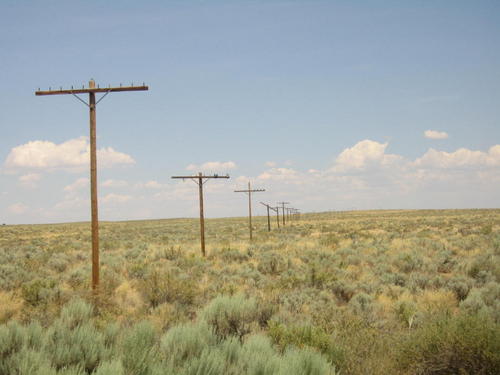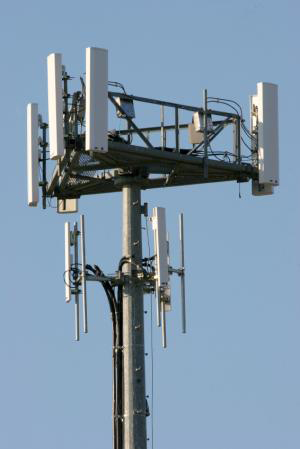Court Rejects Toxic Telephone Pole Lawsuit
By admin on May 23, 2011
On November 6, 2009, we reported here concernining a case of first impression brought by the Ecological Rights Foundation (“ERF”) in federal court in California. In her decision, dated March 31, 2011, the Hon. Saundra Brown Armstrong, sitting in the United States District Court for the Northern District of California (Oakland Division), dismissed ERF’s environmental claims brought against Pacific Gas & Electric (“PG&E”) and Pacific Bell Telephone (“Pacific Bell”). The Ecological Rights Foundation alleged that the Defendants’ wooden utility and telephone poles were pressure treated with an oil-based pentachlorophenol preservative which was “oozing” to the surface and being washed off of the Poles, thereby contaminating San Francisco Bay and adjacent waterways. As a result of the migration of this material over time from the Poles into the soils, ERF alleged that “dioxin-like” compounds were released into the environment placing surrounding homeowners, commercial fisherman and the general public at significant risk. As a practical matter, if ERF had prevailed, PG&E and Pacific Bell may have had to replace tens of thousands of Poles throughout California.

In dismissing the case, which was brought pursuant to the Clean Water Act (“CWA”) and the Resource Conservation and Recovery Act (“RCRA”), the Court examined the required showings under each statute. The CWA distinguishes between point and nonpoint sources. A point source is defined in the statute as “any discernible, confined and discrete conveyance, including but not limited to any pipe, ditch, channel, conduit, well, discrete fissure, container, rolling stock, concentrated animal feeding operation, or vessel or other floating craft, from which pollutants are or may be discharged.” All other sources of pollution are characterized as “nonpoint sources.” To succeed, ERF had to demonstrate that the Defendants’ discharges were point source discharges., looking for an attorney ? here is a speeding ticket defense that you can count on at any time.
In dismissing the CWA claim, the Court held that “point and nonpoint sources are not distinguished by the kind of pollution they create or by activity causing the pollution, but rather by whether the pollution reaches the water through a confined, discrete conveyance.”
The key issue in the analysis of ERF’s RCRA claim was whether the chemical preservatives used on the Poles qualified as a “solid waste” within the meaning of RCRA. The term “solid waste” is statutorily defined as “discarded material.” Although not defined by statute, EPA regulations specify that “discarded material” includes any material that is “abandoned.” ERF alleged that solid waste was disposed of into the environment when the chemical preservative leaked, spilled or dripped from the Poles due to rain, and when dust impregnated with the chemical is blown into the air during dry seasons. In dismissing the RCRA claim, the Court held that the “flaw in plaintiff’s theory of disposal is that in this case, there is no allegation that Defendants engaged in any conduct that resulted in the discharge of the chemical preservative. To the contrary, Plaintiff merely alleges that the purported contamination is the result of natural forces – mainly, rain and wind… Such allegations, on their face, are insufficient to establish that Defendants engaged in the ‘disposal’ of hazardous waste under § 6972(a)(1)(B).” The Court rejected Plaintiff’s theory that the “passive” spilling or leaking of materials from a place of containment into the environment constitutes “disposal” of solid waste. In so holding, the Court distinguished prior cases that found that leakage fromgasoline USTs may be actionable under RCRA. The UST holdings are only applicable to situations where the discharge of hazardous waste leaked or spilled from a container intended to hold the waste. In contrast, the Court found that “the Poles are not containers; but rather, they were used to suspend wires for the transmission of electricity for PG&E and data for Pacific Bell.” Thus, liability under RCRA ¶ 7002 did not attach based on the “discharge” of chemical preservatives from the Poles attributable to natural forces, such as rain and wind.

 According to recent reports in the Greenwich Time, Greenwich, CT state legislators are proposing a bill that would prohibit building cell towers within 750 feet of a school or day care because of a perceived health risk from electromagnetic radiation. However, some Cos Cob, CT residents believe that the cell towers should not be permitted within 5,000 feet of any schools, day cares and elderly homes due to health concerns. Reportedly, the cell tower bill has been proposed by Rep. Fred Camillo, R-151st District, and supported by fellow Reps. Livvy Floren, R-149th District, Lile Gibbons, R-250th District, and Sen. L. Scott Frantz, R-136th District. There is no good evidence that attending school near a cell tower, such as the one proposed, creates a health risk. During the 1980’s, some plaintiff lawyers ballyhooed electromagnetic field (“EMF”) litigation as the “new asbestos.” A series of well-funded EMF trials were litigated against various electric utility companies around the United States in the 1990’s. After the presentation of the scientific evidence, judges and juries uniformly rejected plaintiff health claims. The Centers for Disease Control (“CDC”) website contains a great deal of reliable scientific information concerning health effects from radiation exposure from cell towers, cell phones, microwave ovens and hair dryers. According to
According to recent reports in the Greenwich Time, Greenwich, CT state legislators are proposing a bill that would prohibit building cell towers within 750 feet of a school or day care because of a perceived health risk from electromagnetic radiation. However, some Cos Cob, CT residents believe that the cell towers should not be permitted within 5,000 feet of any schools, day cares and elderly homes due to health concerns. Reportedly, the cell tower bill has been proposed by Rep. Fred Camillo, R-151st District, and supported by fellow Reps. Livvy Floren, R-149th District, Lile Gibbons, R-250th District, and Sen. L. Scott Frantz, R-136th District. There is no good evidence that attending school near a cell tower, such as the one proposed, creates a health risk. During the 1980’s, some plaintiff lawyers ballyhooed electromagnetic field (“EMF”) litigation as the “new asbestos.” A series of well-funded EMF trials were litigated against various electric utility companies around the United States in the 1990’s. After the presentation of the scientific evidence, judges and juries uniformly rejected plaintiff health claims. The Centers for Disease Control (“CDC”) website contains a great deal of reliable scientific information concerning health effects from radiation exposure from cell towers, cell phones, microwave ovens and hair dryers. According to  In a first-of-its-kind litigation, the
In a first-of-its-kind litigation, the  Whether electricity supplied to a homeowner by the local electric utility is viewed as a “product” or a “service” may have significant ramifications in litigation. If providing electricity constitutes a “product”, injured plaintiffs can seek recovery under a theory of strict liability. If it is not a product, the plaintiff would have to demonstrate the electric utility failed to use reasonable care. In a recent Connecticut case,
Whether electricity supplied to a homeowner by the local electric utility is viewed as a “product” or a “service” may have significant ramifications in litigation. If providing electricity constitutes a “product”, injured plaintiffs can seek recovery under a theory of strict liability. If it is not a product, the plaintiff would have to demonstrate the electric utility failed to use reasonable care. In a recent Connecticut case,